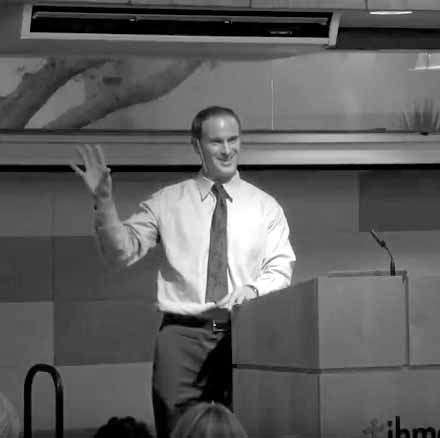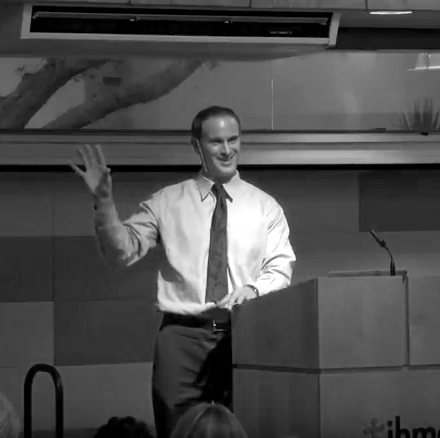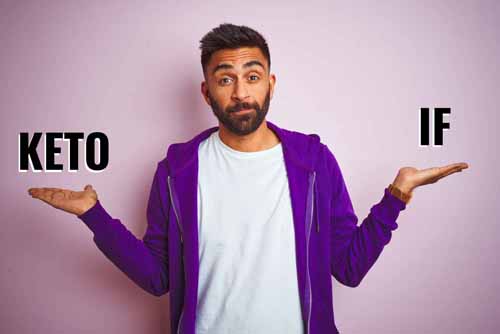How to Break a Fast: What to Eat After Fasting
Written by Stephen Anton PhD on May 15th, 2022

How to break a fast?
This is an excellent question and one that many people are now asking.
The answer is that “it depends” on the type of fast we are talking about (to some extent).
Common Ways to Fast
There are many different types of fasts to consider, including dry fasting, water only fasting, time restricted eating, alternate day fasting, 5:2 fasting, five day fasting, and so forth.
So, we need to be clear what type of fast we are talking about.
When we say a fast, there may be a big difference between fasting one day, a short term fast, versus a five day fast, or long-term (two weeks) fast.
Additionally, the juice only fast and the fasting mimicking diet have recently become popular.
These are health promoting regimens but involve significantly restricting calories but do not represent fasting in the traditional sense of the word.
For simplicity, it can be helpful to think of fasting periods as being short-term (< 24 hours) or long-term (>48 hours).
How to Break a Short-Term Fast
Probably the most popular form of intermittent fasting is time restricted eating, where one engages in a fasting period of 14 to 18 hours each day.
Generally, most people follow a time-restricted eating plan every day of the week, but this form of intermittent fasting could be practiced less frequently as well (e.g., 5 days of the week).
Few if any considerations are needed to “break” this type of fast, as the daily fasting period would not be sufficient by itself to shift the body into ketosis or negatively impact digestive processes.
Rather, this eating pattern is aligned with our body’s natural biorhythms and once the body has adapted to it, almost any food can be consumed with the “break-fast” meal.
At the end of the daily fasting period, you can think of the body as being in a similar state as it would be after a prolonged or intense exercise session.
How to Break a Short-Term Fast That Included Exercise
Speaking of this, another important factor to consider in determining how to break a short-term daily fast is what activities were engaged in during the fasting time-period.
If you exercised at a relatively high intensity for an hour or more duration, then you are likely to benefit from consuming some carbs at your “break-fast” meal to refill your glycogen stores.
The exact amount of carbs needed will be specific to each individual, but generally speaking, the amount should increase as a function of the duration and intensity of the exercise session.
If you are completely adapted to a ketogenic diet or carnivore diet, then you may feel fine without carbs.
For the vast majority of individuals, however, this will likely not be the case.
On the other hand, if you are sedentary during the fasting time-period, then it is highly recommended that the first meal be comprised of mostly fat and protein with little carbs.
Another option to consider for those who work out intensely is a post workout shake comprised of good quality proteins, such as whey, and fats, such as coconut oil.
The milk base could be coconut, camel, or cow’s milk, and if desired a banana could be added for taste and energy.
This can serve as a quick meal replacement when you do not have sufficient time to prepare a meal or during times in which you need quick fuel to recover.
How to Break a Long-Term Fast
When breaking longer-term fasts (48 hours or longer), some people find that a transition snack (or meal) that is easy to digest and primes the system for a larger meal can be helpful.
Examples of such snacks would include a cup of bone broth, yogurt, or a banana.
These small and easy to digest snacks can activate digestive processes and prime the body for future larger meals.
So, a transition snack is worth considering and may be a helpful approach to breaking longer-term fasts for many people.
Such transition snacks, however, are not absolutely necessary, as many people are able to go from fasting for relatively long periods to eating normal/typical meals.
In fact, this is how our ancestors survived for millions of years.
They frequently went long time periods without food (and sometimes water) and ate whatever was available when they came across it, including raw meat, berries, and nuts.
Although we may feel hungrier than usual after fasting for long periods of time, the first meal does not need to be super large, as our body can only digest so much at one time.
However, it does need to be small either and should contain some good quality protein.
If the first meal is at lunchtime, the body should be primed and ready to consume protein in the form of good quality meat or seafood.
How Not to Break a Fast
If we have fasted for a long-duration, we may feel like we can eat more than we normally would at our first meal.
At this time, however, it is critical not to overeat and consume so many calories that we overburden the system.
Excess caloric consumption at meals can flood our bloodstream with glucose, insulin, cholesterol, fat (triglycerides), cholesterol, as well as a host of other cellular wastes that increase levels of oxidative damage and inflammation in the body.
Additionally, consumption of high calorie, high glycemic food can lead to metabolic and hormonal changes that promote fat deposition (i.e., fat gain) and ultimately stimulate hunger levels.
Additionally, we would not want to consume high carbohydrate, high glycemic meals that would spike glucose levels and disrupt metabolic processes.
Following a high calorie meal, a large amount of nutrients enter the bloodstream, which raises plasma glucose, triglycerides and other pro-inflammatory chemicals above basal (or resting) levels.
Rather, what we want is a meal that will leave us in a state of postprandial wellness, in which one feels satiated and healthy energy is produced.
In this state, one feels energized and has high levels of mental clarity.
This is the goal and desired place to be, but typically this is not where most people find themselves after meals.
How I Break My Fast
Personally, I am a fan of breaking the fast by going to brunch for my “break-fast” meal, which typically consists of cage free eggs and grass-fed meat or wild salmon, as well as some starchy carbohydrates, greens and fruits.
This meal typically leaves me feeling energized and satiated all afternoon.
So, these are various options to consider and ways to break the fast.
There is no one way that works for everyone, so experiment and see what works for you.
Of course, these recommendations only apply to “wet fasting” and how to break a dry fast would be a little different but that is a topic for another day.
More on intermittent fasting:
How to Break a Fast: What to Eat After Fasting
Written by Stephen Anton PhD on May 15th, 2022

How to break a fast?
This is an excellent question and one that many people are now asking.
The answer is that “it depends” on the type of fast we are talking about (to some extent).
Common Ways to Fast
There are many different types of fasts to consider, including dry fasting, water only fasting, time restricted eating, alternate day fasting, 5:2 fasting, five day fasting, and so forth.
So, we need to be clear what type of fast we are talking about.
When we say a fast, there may be a big difference between fasting one day, a short term fast, versus a five day fast, or long-term (two weeks) fast.
Additionally, the juice only fast and the fasting mimicking diet have recently become popular.
These are health promoting regimens but involve significantly restricting calories but do not represent fasting in the traditional sense of the word.
For simplicity, it can be helpful to think of fasting periods as being short-term (< 24 hours) or long-term (>48 hours).
How to Break a Short-Term Fast
Probably the most popular form of intermittent fasting is time restricted eating, where one engages in a fasting period of 14 to 18 hours each day.
Generally, most people follow a time-restricted eating plan every day of the week, but this form of intermittent fasting could be practiced less frequently as well (e.g., 5 days of the week).
Few if any considerations are needed to “break” this type of fast, as the daily fasting period would not be sufficient by itself to shift the body into ketosis or negatively impact digestive processes.
Rather, this eating pattern is aligned with our body’s natural biorhythms and once the body has adapted to it, almost any food can be consumed with the “break-fast” meal.
At the end of the daily fasting period, you can think of the body as being in a similar state as it would be after a prolonged or intense exercise session.
How to Break a Short-Term Fast That Included Exercise
Speaking of this, another important factor to consider in determining how to break a short-term daily fast is what activities were engaged in during the fasting time-period.
If you exercised at a relatively high intensity for an hour or more duration, then you are likely to benefit from consuming some carbs at your “break-fast” meal to refill your glycogen stores.
The exact amount of carbs needed will be specific to each individual, but generally speaking, the amount should increase as a function of the duration and intensity of the exercise session.
If you are completely adapted to a ketogenic diet or carnivore diet, then you may feel fine without carbs.
For the vast majority of individuals, however, this will likely not be the case.
On the other hand, if you are sedentary during the fasting time-period, then it is highly recommended that the first meal be comprised of mostly fat and protein with little carbs.
Another option to consider for those who work out intensely is a post workout shake comprised of good quality proteins, such as whey, and fats, such as coconut oil.
The milk base could be coconut, camel, or cow’s milk, and if desired a banana could be added for taste and energy.
This can serve as a quick meal replacement when you do not have sufficient time to prepare a meal or during times in which you need quick fuel to recover.
How to Break a Long-Term Fast
When breaking longer-term fasts (48 hours or longer), some people find that a transition snack (or meal) that is easy to digest and primes the system for a larger meal can be helpful.
Examples of such snacks would include a cup of bone broth, yogurt, or a banana.
These small and easy to digest snacks can activate digestive processes and prime the body for future larger meals.
So, a transition snack is worth considering and may be a helpful approach to breaking longer-term fasts for many people.
Such transition snacks, however, are not absolutely necessary, as many people are able to go from fasting for relatively long periods to eating normal/typical meals.
In fact, this is how our ancestors survived for millions of years.
They frequently went long time periods without food (and sometimes water) and ate whatever was available when they came across it, including raw meat, berries, and nuts.
Although we may feel hungrier than usual after fasting for long periods of time, the first meal does not need to be super large, as our body can only digest so much at one time.
However, it does need to be small either and should contain some good quality protein.
If the first meal is at lunchtime, the body should be primed and ready to consume protein in the form of good quality meat or seafood.
How Not to Break a Fast
If we have fasted for a long-duration, we may feel like we can eat more than we normally would at our first meal.
At this time, however, it is critical not to overeat and consume so many calories that we overburden the system.
Excess caloric consumption at meals can flood our bloodstream with glucose, insulin, cholesterol, fat (triglycerides), cholesterol, as well as a host of other cellular wastes that increase levels of oxidative damage and inflammation in the body.
Additionally, consumption of high calorie, high glycemic food can lead to metabolic and hormonal changes that promote fat deposition (i.e., fat gain) and ultimately stimulate hunger levels.
Additionally, we would not want to consume high carbohydrate, high glycemic meals that would spike glucose levels and disrupt metabolic processes.
Following a high calorie meal, a large amount of nutrients enter the bloodstream, which raises plasma glucose, triglycerides and other pro-inflammatory chemicals above basal (or resting) levels.
Rather, what we want is a meal that will leave us in a state of postprandial wellness, in which one feels satiated and healthy energy is produced.
In this state, one feels energized and has high levels of mental clarity.
This is the goal and desired place to be, but typically this is not where most people find themselves after meals.
How I Break My Fast
Personally, I am a fan of breaking the fast by going to brunch for my “break-fast” meal, which typically consists of cage free eggs and grass-fed meat or wild salmon, as well as some starchy carbohydrates, greens and fruits.
This meal typically leaves me feeling energized and satiated all afternoon.
So, these are various options to consider and ways to break the fast.
There is no one way that works for everyone, so experiment and see what works for you.
Of course, these recommendations only apply to “wet fasting” and how to break a dry fast would be a little different but that is a topic for another day.
More on intermittent fasting:

Get the Beginner’s Guide to Intermittent Fasting
Take advantage of this FREE PDF and learn the basics of intermittent fasting.

Get the Beginner’s Guide to Intermittent Fasting
Take advantage of this 100% free PDF and learn the basics of intermittent fasting.

Get the Beginner’s Guide to Intermittent Fasting
Take advantage of this FREE PDF and learn the basics of intermittent fasting.









